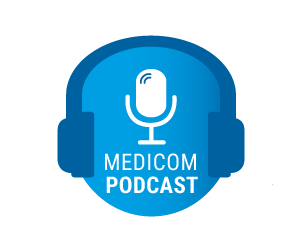Although 20% of 702 patients still needed an appendectomy within 30 days after beginning a 10-day antibiotic regimen, the odds had grown to 40% after 1 year and 46% after 2 years.
The risk was even higher if appendicolith was present -- 31% at 30 days, 52% at 1 year and 54% at 2 years.
Without appendicolith, the rates were 16%, 36% and 43% respectively.
The risks tended to plateau after 2 years, but the number of patients who were studied for that long was small.
The final results of the randomized CODA trial, which involved 1,552 participants at 25 U.S. medical centers, were released Monday at this year's American College of Surgeons Clinical Congress and online by The New England Journal of Medicine.
"Although some clinicians and patients may determine that these longer-term rates of appendectomy make antibiotics a less desirable treatment than early appendectomy, substantial numbers of patients report a preference for antibiotics, even if appendectomy may ultimately be necessary," the researchers wrote in the Journal.
The CODA team has developed a website, http://www.appyornot.org/, to help patients decide whether they prefer to opt for surgery or antibiotic therapy.
More than one in 20 Americans will develop appendicitis at some point in their lives, according to the National Institute of Diabetes and Digestive and Kidney Diseases. About 11.6 million cases occur worldwide each year, with about 50,000 deaths.
The results also suggest that antibiotic therapy can be used again if appendicitis recurs. At the two-year mark, 14% of the patients had received additional antibiotics and 66% subsequently underwent an appendectomy.
A year ago, the team released preliminary results showing that antibiotic treatment was a viable option, although when antibiotics were given, 29% of the patients ended up receiving surgery within 90 days anyway.
"But many of our patients were quick to point out there's a 7 in 10 chance of avoiding surgery," coauthor Dr. David Flum of the University of Washington School of Medicine in Seattle, told Reuters Health at the time. "Some are going to say, get it over with, I don't want to have the risk. But a lot of others have to worry about copays, travel, work schedule or caregiver burdens" and will prefer the antibiotic option.
Patients in the antibiotic group missed less time at work and school.
In addition, 47% of the patients treated with antibiotics were not hospitalized as part of their initial treatment, "which is a pretty big deal for trying to avoid hospitals in the COVID era," said Dr. Flum.
Two months later, the College refined its guidance on appendicitis treatment, calling antibiotics "an acceptable first-line treatment" for most patients.
Antibiotic therapy for children with appendicitis is being examined in ongoing studies.
SOURCE: https://bit.ly/2ZulPjU The New England Journal of Medicine, online October 25, 2021.
By Reuters Staff
Posted on
Previous Article
« Belimumab after rituximab a promising therapeutic strategy for lupus Next Article
2021 ESC Guidelines on Cardiovascular Disease Prevention »
« Belimumab after rituximab a promising therapeutic strategy for lupus Next Article
2021 ESC Guidelines on Cardiovascular Disease Prevention »
Related Articles

October 28, 2024
UEGW 2024 Highlights Podcast
January 25, 2023
Top 14 Medical Innovations for 2022
© 2024 Medicom Medical Publishers. All rights reserved. Terms and Conditions | Privacy Policy
HEAD OFFICE
Laarderhoogtweg 25
1101 EB Amsterdam
The Netherlands
T: +31 85 4012 560
E: publishers@medicom-publishers.com

